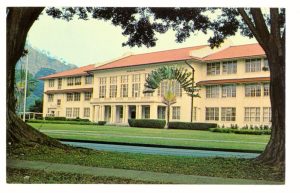What is a Zonian, exactly? The term “Zonian” holds a unique significance in the cultural tapestry of Panama, harking back to the era of the Panama Canal Zone. Enveloped by a blend of local and international influences, Zonians represent a community with a distinctive identity shaped by their connection to the Panama Canal and the interplay of various cultures.
The Panama Canal: Engineering Marvel and Cultural Nexus
To understand the essence of Zonian culture, one must first delve into the history and significance of the Panama Canal. The canal, a monumental engineering feat completed in 1914, revolutionized global trade by connecting the Atlantic and Pacific Oceans. It served as a critical maritime shortcut, reducing the transit time for ships and reshaping the geopolitical landscape.
The Panama Canal Zone, a strip of land flanking the canal, was originally under American jurisdiction due to the Hay-Bunau-Varilla Treaty. This arrangement continued until the Torrijos-Carter Treaties in 1977, which marked the gradual transition of control to Panama. The canal’s strategic importance not only shaped the landscape physically but also left an indelible mark on the cultural and social fabric of the region.
Zonians: Nurturing a Unique Identity
Zonians refer to the community of individuals who were born or spent a significant part of their lives in the Panama Canal Zone during the period of American control. This community, which includes both American expatriates and locals employed by the Canal Zone administration, developed a distinctive identity marked by a fusion of local and international influences.
One of the defining features of Zonian culture is its multicultural makeup. The Panama Canal Zone was a melting pot, bringing together people from diverse backgrounds and fostering a unique sense of community. Zonians celebrated traditions and customs from both Panama and the United States, creating a cultural amalgamation that set them apart.
Cultural Influences: A Blend of Local and American Tones
Zonian culture is a testament to the intricate dance between local Panamanian influences and the imprint of American presence. The daily lives of Zonians were characterized by a rich tapestry of customs, languages, and cuisines that reflected the diversity of the community.
Language played a pivotal role in shaping Zonian identity. While English was the primary language in the Panama Canal Zone, the proximity to Panama ensured a bilingual environment. Zonians seamlessly incorporated Spanish into their linguistic repertoire, fostering a sense of connection with the local culture.
Culinary traditions in Zonian households mirrored this fusion. From traditional American comfort food to Panamanian delicacies, Zonian kitchens were a crossroads of flavors. The famous “hojaldras,” Panamanian fried dough, might share a table with classic American apple pie during community gatherings, symbolizing the harmonious blend of culinary traditions.
Festivals and celebrations provided another avenue for cultural exchange. Zonians actively participated in both Panamanian and American holidays, creating a vibrant calendar of events that showcased the diversity of the community. This inclusive approach fostered a sense of unity and mutual understanding among Zonians, regardless of their cultural backgrounds.
Legacy and Transition: Zonian Identity in Post-Canal Panama
The transition of the Panama Canal Zone to Panamanian control in 1999 marked a significant chapter in the history of Zonians. As the U.S. relinquished control, the community faced the challenge of preserving its unique identity while adapting to a new era.
The legacy of Zonian culture endures in the memories, traditions, and stories passed down through generations. Many Zonians, despite the physical changes in the landscape, maintain a strong connection to the Panama Canal Zone and continue to celebrate their shared history.
The transition also prompted a deeper reflection on identity and belonging. Some Zonians chose to remain in Panama, contributing to the local culture and society. Others dispersed across the globe, taking with them the rich tapestry of experiences and influences that defined their upbringing in the Panama Canal Zone.
The Global Perspective: Zonian Contributions Beyond Borders
Zonian culture, with its blend of local and American influences, has transcended geographic boundaries. The global diaspora of Zonians has contributed to a broader understanding of cultural diversity and facilitated connections between Panama and the wider world.
The experiences of Zonians living abroad serve as a bridge between cultures, fostering a mutual appreciation for the unique blend of traditions that define Zonian identity. Through cultural exchanges, community events, and digital platforms, Zonians continue to play a role in promoting understanding and unity across borders.
A Cultural Mosaic in Transition
The story of Zonians and their unique identity is a testament to the complex interplay of cultures that unfolded in the Panama Canal Zone. From the construction of the canal to the handover of control to Panama, Zonians navigated a dynamic cultural landscape shaped by local Panamanian influences and the enduring legacy of American presence.
As the world evolves and borders blur, the legacy of Zonian culture persists, fostering connections between past and present, local and global. The rich tapestry of Zonian identity serves as a reminder of the power of cultural exchange and the resilience of communities in the face of transition. In the hearts and stories of Zonians, the Panama Canal Zone lives on as a symbol of cultural diversity, shared history, and the enduring spirit of a community that once thrived at the crossroads of two worlds. To learn more, please contact us online here.
